Related Tags
“Our wives thought we were dorky idiots until Joe Bonamassa came over”: Doug & Pat
They may never have hit the big time as young guitar slingers, but in later life, Doug Fraser and Pat O’Donnell have found fame as successful YouTubers.
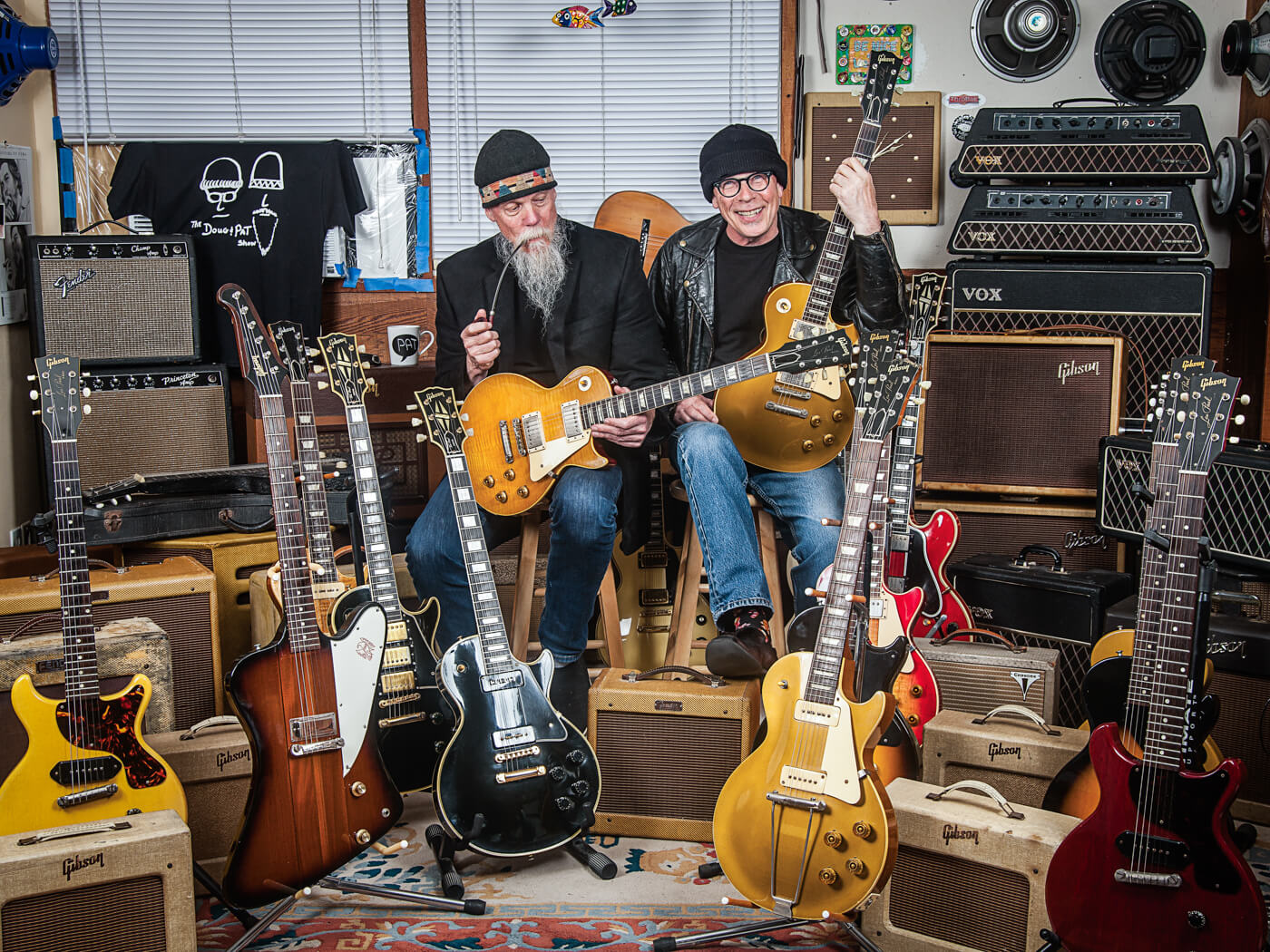
All images: Keith Buckley
There are many reasons why The Doug And Pat Show stands out amid the congested world of guitar-related YouTube channels. There’s no denying its hosts are somewhat older than most other guitar YouTubers and they have a collection of vintage guitars and amplifiers that’s bewildering in its quality and scope. They can also be laugh-out-loud funny, but a serious and analytical approach underlies their equipment tests, and the gear is always the star of the show. Doug begins by telling us how he met his partner in tone.
Disco disgust
“Back in ’71 or ’72, I was playing in local bands and working in a music store and Pat walked in one day,” he recalls. “I had really long hair at the time, but Pat’s hair was down to his butt and he came over and asked, ‘are you the guy with the ’56 Les Paul Custom?’. I got the guitar out, and we started talking about guitars and music.
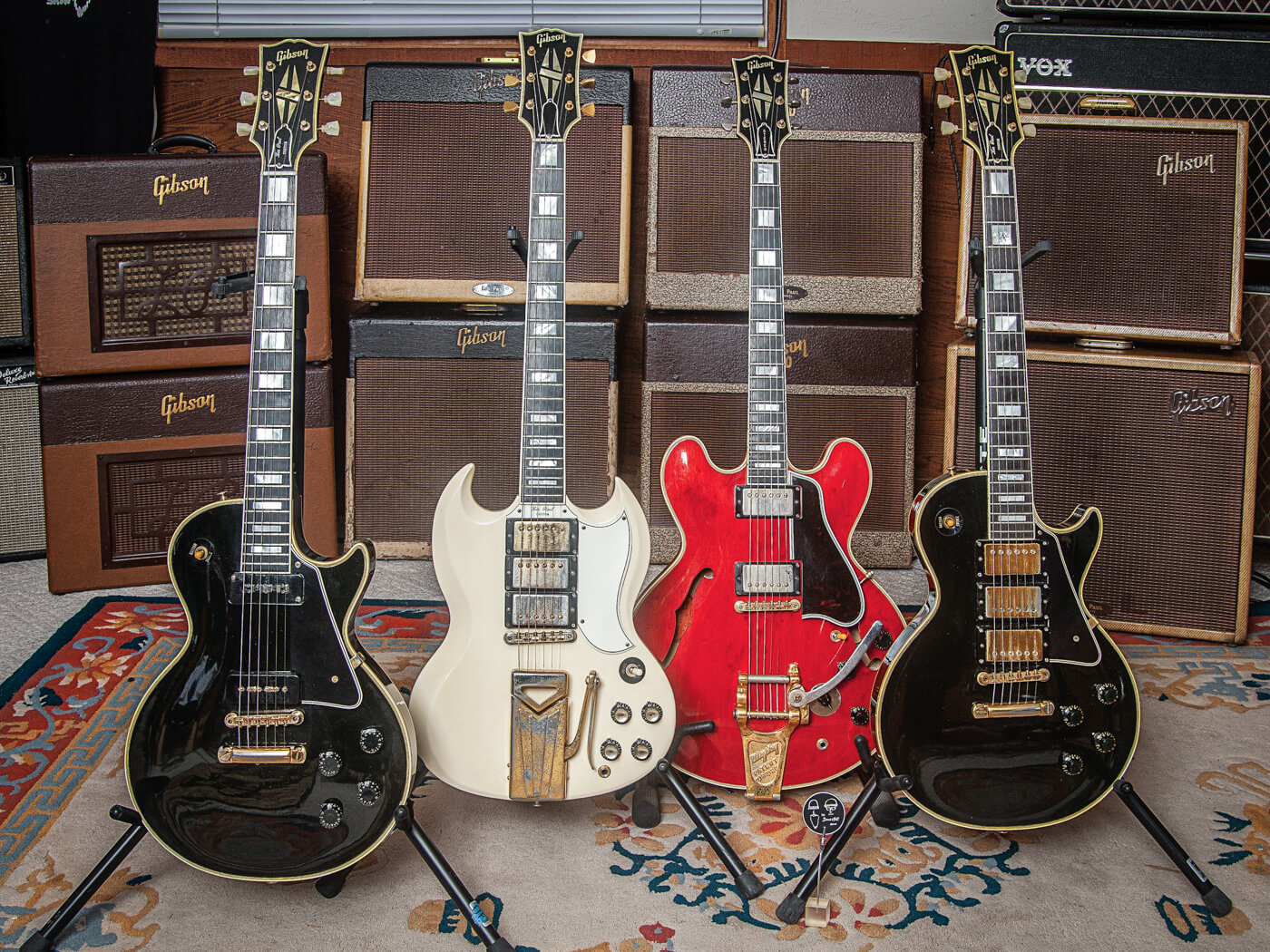
“At the time disco was starting to get popular, and we detested it, so we decided we’d put together a band that played Les Paul guitar music. We called it ‘The Heavy Metal Thunder Band’, you can see one of our posters in the background on the show. We played around Portland, and we used either Les Paul Juniors or Sunburst Les Pauls through 50-watt Marshall Plexis.”
At that time the vintage-gear scene was in its infancy, but did the guys have to trade up, or were they able to jump straight in at the deep end?
“Well back then things weren’t really that expensive”, Pat explains, “they were just used guitars and since we didn’t use effects pedals, if we wanted a Telecaster sound we would just buy a Telecaster and it was the same with Bursts.
“Then all of a sudden, I’d be playing a club and I’d look around and see that I had maybe five guitars on stage for all the different sounds. Then it was six, and then it all went from there. I wouldn’t say that we are really collectors, but we do have a lot of usable stuff.”
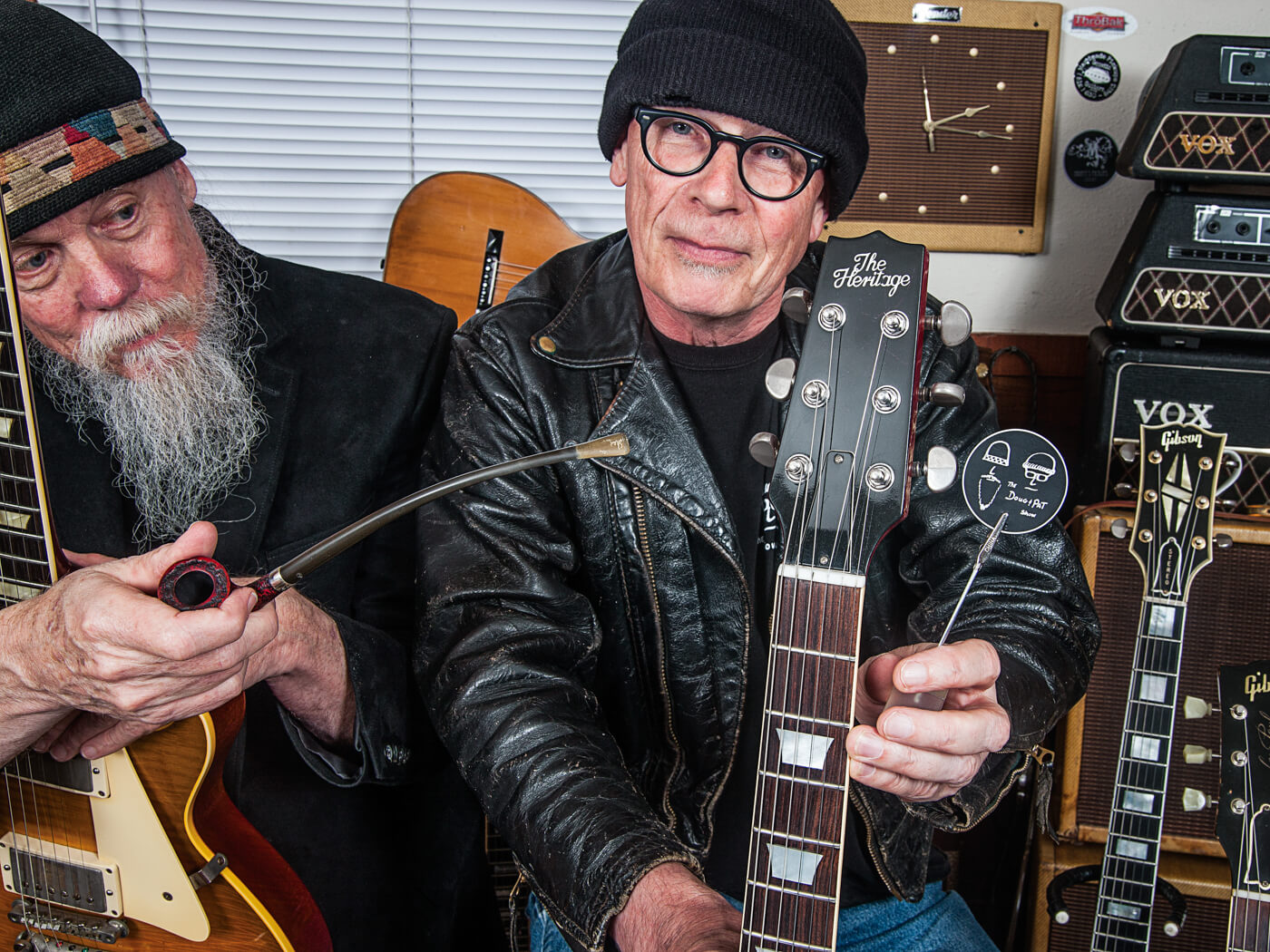
Winning the Oscar
Pat’s ’58 Goldtop ‘Oscar’ features regularly on the show, and Joe Bonamassa could barely put it down when he was a guest. Pat tells us how he found it all those years ago: “Well, I had a small guitar shop with mostly vintage guitars back in the 70s. I already owned a sunburst Les Paul, but I thought it would be real cool to have a Goldtop with humbuckers too.
“So, I called George Gruhn and he told me Northern Prairie Music in Chicago had one. I called them and spoke to Paul Hamer, who later started Hamer Guitars. He wanted $1,500 for it, and it was too much for me, but we settled on $1,200. I still play TV Juniors, but Oscar just sounds so good we use it a lot. Oscar’s neck is kind of like a cross between a ’58 and a ’60 profile. It just fits, and it’s not real big.”
“It’s not really like a ’60,” Doug clarifies. “Joe Bonamassa said, ‘This is a slightly lower-profile ’58 neck.’ It’s not huge. When we started doing the show, I hadn’t played that guitar ever, and Pat probably hadn’t played it in a while. As we were going through the guitars, I plugged Oscar in and after playing it for about 10 seconds, I said ‘You have got to be kidding me.’
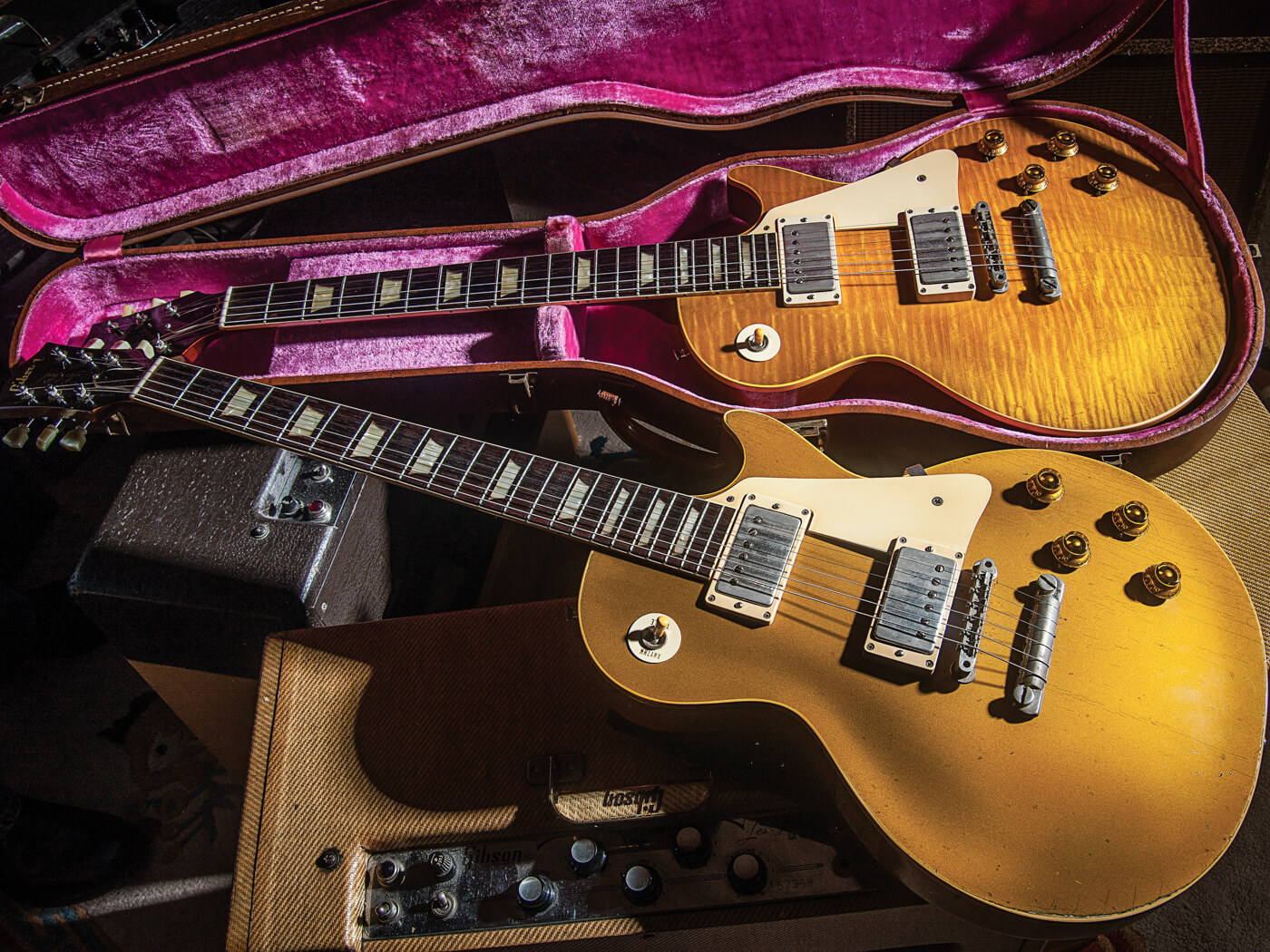
“It was the best sounding Les Paul I had ever heard. So, in the first show we did Jane, Pat’s early 1960 Sunburst, and Oscar. Jane sounds really good, but Oscar is the king.”
“Well maybe not the rhythm pickup,” Pat chimes in. “The rhythm pickup is a little darker because it reads about 8.2K and the bridge is 7.6K. We don’t know if that’s the reason it sounds like that.”
The tale of how Pat got Jane is right up there with Billy Gibbons’ Pearly Gates story. “Oh man, that must have been late ’69 or early ’70. There was an old boy up in Stanfield Junction, about 175 miles east of Portland, and he had the guitar, but he wanted a colour TV set. He took the guitar into a little shop in Pendleton and traded it. I went up to the store the next day, I didn’t even know they had the guitar, but the owner was a friend of mine and he said ‘I’ve got to show you this guitar.’ I opened the case and said ‘Uh… this is nice.’ I ended up paying him $300.”
“The guy really put the screws to Pat on that one,” Doug adds with a chuckle. “The guitar was only about 11 years old when I first saw it, but it was like a Leonardo Da Vinci painting, with all the surface cracking. It already looked old, and it hasn’t really changed since then.”
Having owned and played vintage guitars for so long, we ask if the guys consider age to be a key factor in tone, or whether those guitars were great from the get-go. Doug’s response is unequivocal.
“Let’s talk about ZZ Top’s first album. They recorded that in late ’69, so Pearly Gates was 10 years old. The Beano Burst was just six years old, but the last chorus of Hideaway, where he just hits that note, well that changed everything right there. We might subscribe to the tonal differences being down to the quality of the wood, but not the age of the wood.”
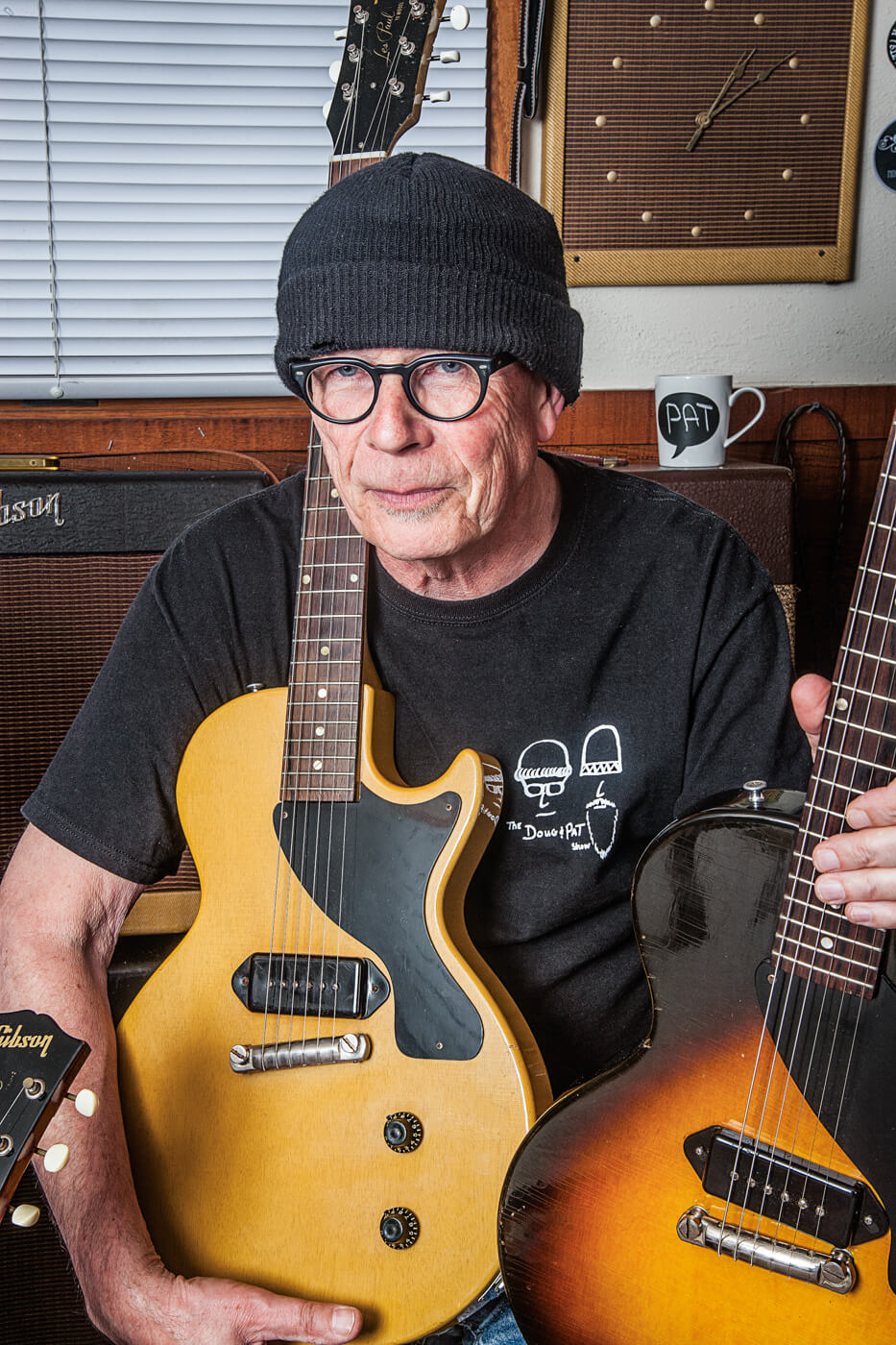
Ace amps
The guys are pretty keen on British amps and have single-handedly revived interest in the somewhat obscure Vox AC10 SRT.
“I was totally enamoured of Brian May’s sound,” Doug explains, “the high end he got and that explosive quality was what I was looking for. Pat and I were playing together around ’77 and I had a 50-watt Plexi through a 4×12 cabinet, a ’70 or ’71, and it sounded great, but it didn’t have that top end.
“Then I found out that Brian May was playing those English Vox amps, and here in the US we didn’t see many. Because of the Thomas Organ thing, our idea of Vox amps was that they were pieces of shit. Then a guy walked into my music store with an AC50 head.
“He said, ‘This amp is rubbish, it keeps screwing up’ and he left it with me to fix. I opened it up and there was an internal fuse that was arcing. I popped the fuse out, bent the clip back and it sounded fantastic. There was the top end I had been looking for. I told the owner it was fixed and he said, ‘I don’t care, I’m going to sell it, would you give me $50?’ So, I did.
“Then I got into proper AC30s, but I still couldn’t quite get that Brian May sound. I was the only guy in the Portland area using English Vox amps, so people used to offer them to me. A guy got in touch and said, ‘I’ve got a Vox amp and I don’t know what it is, are you interested?’
“He brought [the AC10 SRT] over and I took it to my rehearsal space. I plugged it in and after playing it for a few seconds, I go, ‘Oh my god, this is it, this is what I’ve been looking for.’ I’d pre-amp it up to boost the level and it would go into god’s own compression and retain that top-end harmonic thing.
“That was 1985 and I used that amplifier in clubs, four or five nights a week, cranked. Everybody would ask, ‘How do you get that sound?’, but it was only when we started doing the show that this model started to get better known. The reason we use it is that it gives the best demo of high-quality guitars and what they can do.

“Pat scored one too, hunting it down in his usual fashion, like a snake in the grass. Pat was on the phone calling music stores all over the country and he was told by a number of Vox ‘experts’ that the AC10 SRT didn’t exist. They don’t sound like anything else, but the reverb is just terrible.
“I started using my AC10 with ceramic Celestions, because they’re really loud. Then somebody traded in a Super Beatle cab that had been cut in half and when I plugged into that to test it, it was like the blanket came off. It was so loud, so chimey, so hi-fi and yet it loved that overdriven sound. When I looked inside there were Silver Alnicos. I think they’re as important to the Vox tone as everything else is.”
“We like Gibson amps too,” admits Pat, looking a tad sheepish. “We’ve got maybe 12 or 15 of them. And all the different versions throughout the 50s. They all sound great in their own way. The late 50s ones are a little more gained-up and I really prefer those, although I do have to say that when Doug was playing Oscar through the ’55 GA40 with the P12Q Jensen on the show, that was the closest we’ve ever come to that ZZ Top ’Brown Sugar’ tone”.
“We love the thickness of tweed Fenders,” adds Doug, “but those Gibson amps have personality that’s off the charts. Given the choice we’d play a later Gibson GA40 and they cost half as much.”

Gold Standards and special treats
Oscar isn’t the only Goldtop in the Doug And Pat Show arsenal, and Doug fills us in on all their models. “I have a ’52 without the neck binding and it’s one of those stories that’s hard to believe. I was in Portland, going to a Goodwill store, which is where I get all my fancy clothes. Anyway, I was walking down a side street and there was this guy on his front porch playing this ’52 Les Paul and I’d never seen one like that before.
“I asked him about it and he said he needed to get rid of it so he could move back down to the Bay Area. He wanted $125, so I got the money together and bought it. I just like the way it sounds but it plays terrible. My ’54 has the wraparound tailpiece and it just sounds amazing. I’ve also got a ’56 with a stripped top, and it sounds completely different with the tune-o-matic bridge.”
The guys have a pair of 1950s Les Paul Customs and we ask how they compare with Les Paul Standards. “The ’57 Custom has a more slender neck,” Pat offers, “and with that centre pickup it’s a bit harder to play. It also has the really low ‘speed’ frets, which we’re not fans of. The other one is a ’55, and although it has the same frets, it has a fatter neck and it has the staple and P-90 pickups. It doesn’t have the same output or growl as the ’54 Goldtop, but it has its own sweet sound.”
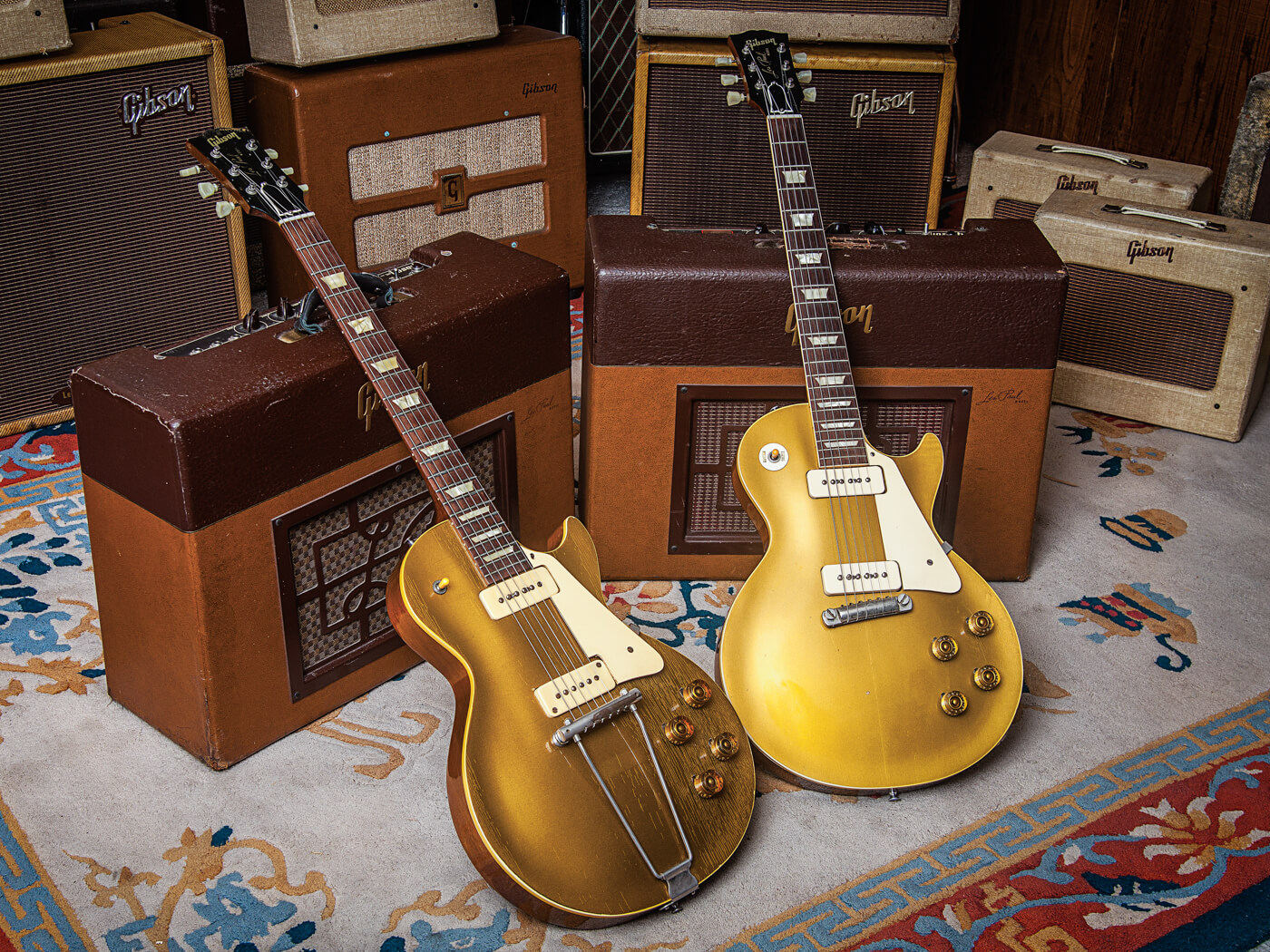
“The ’57 Custom is a little brighter,” Doug suggests, “and both of those guitars have mahogany bodies without the maple caps. The staple neck pickup is a really sensitive beast, but I don’t think it sounds anything like as good as the equivalent Standard with the P-90s.”
“I’ve got a ’57 Special that’s extremely clean and it sounds great. My other one is a red early-’61 double cutaway and I just love that guitar. It’s got a little bit thinner neck than I really care for, but I’m such a big fan of P-90s. In fact, I was going to put some on Oscar, but Doug talked me out of it.”
“I’ve got a re-fretted ’56,” Doug adds. “I’ve used it on stage and for recordings and it has so much personality that for some people it sounds as good, if not better, than a Burst. I do session work here in my studio and people send me Pro Tools tracks to overdub. When they hear the tones they say, ‘Oh my god, what is that?’”
As the guys are long-time fans of Gibson’s ‘student’ models, we ask if Juniors are really better than Specials? “They sound different,” Doug and Pat respond in unison.
“People say that the Special’s rhythm-pickup magnet sucks some of the tone,” Pat continues. “My first good guitar was a ’55 Junior, which I still have. I just love Juniors. If you plug one into an AC10, man you don’t have to think when you play because you just sound great.”
“Juniors are extremely versatile guitars,” Doug points out, “and they were made every bit as good as the high-end Gibsons. They were just simpler, but why they sound different to Specials, we just don’t know.”

Showtime
Pickup testing is a regular feature on the show, but the test guitar is relatively young model. “It’s a ’94 Heritage H-150, but I bought it in ’95 used,” Doug explains. “That guitar has been our benchmark for a really affordable, high-quality Les Paul-type guitar. The quest was to make it sound really great, and we think that we did. We’ve replaced everything on the guitar, and right now we have Amber Spirit Of ’59 pickups installed.”
“There was a noticeable difference when we changed the pots and the hardware,” Pat chimes in.
“Well, the original pots were 250K,” Doug recalls, “and the Schaller pickups sounded like razorblades. The replacement pots are 525K and it has real bumblebee capacitors”.
Doug and Pat clearly retain their enthusiasm and excitement for all things guitar and Doug explains the thinking behind their YouTube channel. “We basically took the same thing that Pat and I have been doing since the day we met, which is endlessly discussing vintage guitars. Our wives thought we were the most unbalanced, dorky idiots ever, until Joe Bonamassa came over.
“The relationship we have with each other is what you see on camera. We started out doing comparisons of boutique PAF replicas, because nobody else was able to compare them with real ones, and we just kept going. The other thing we’re doing is showing people the options. We’re not endorsing anything, you’ll never have one of our videos stop in the middle for an advertisement and we don’t make any money from this. We do other things to make money. We’re just guitar guys talking about guitar stuff.”
Check out The Doug And Pat Show at youtube.com/DFraserHomes. To see more of their gear collection, click here.
